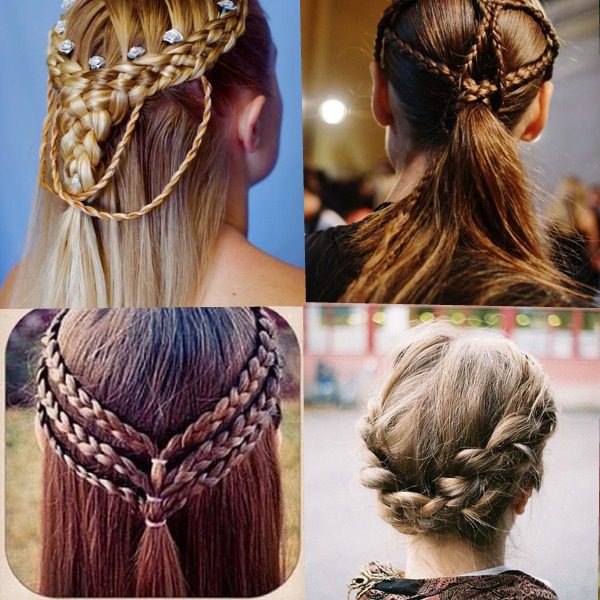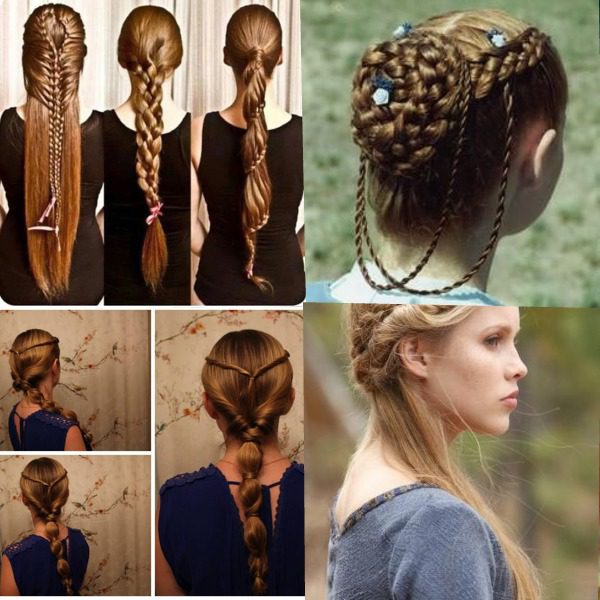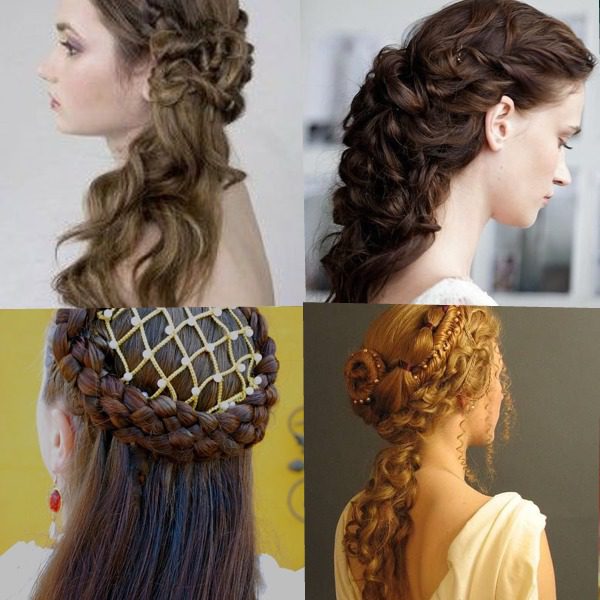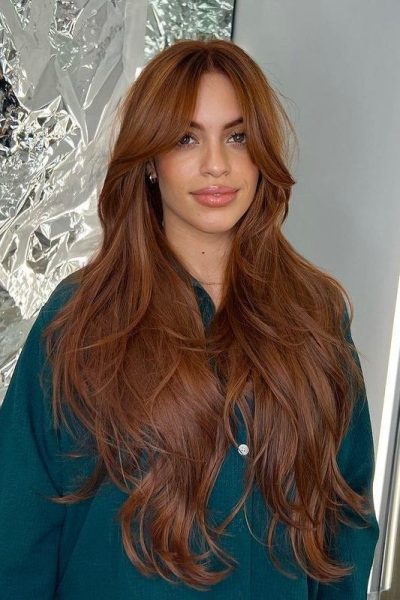medieval women’s hairstyles

medieval women’s hairstyles Medieval women’s hairstyles varied depending on the time period, social status, and region. Here are a few examples of popular hairstyles during the Middle Ages:
- Loose Hair: Many women wore their hair loose and flowing, especially during the early medieval period. Long hair was often considered a symbol of beauty and femininity.
- Braids: Braided hairstyles were quite common and varied in complexity. Women would weave their hair into elaborate braids or multiple smaller braids. These braids were sometimes adorned with ribbons, beads, or jeweled pins.
- Buns: Women often wore their hair in buns, positioned at the back of the head or on top. These buns could be simple and neat or more intricate and decorated with hairnets, veils, or decorative combs.
- Tightly Pulled Back: In some regions and during certain time periods, women would pull their hair tightly back from the face and secure it at the nape of the neck. This style was often achieved with the help of hairnets, veils, or head coverings.
- Wimples and Veils: Married women, particularly in the later Middle Ages, commonly covered their hair with veils or wimples. Wimples were a type of cloth that covered the hair, neck, and chin, leaving only the face exposed.
- Curls and Waves: Some women used hot irons, rods, or other methods to curl or wave their hair. These curls could be left loose or incorporated into braids or updos.
It’s important to note that the specific hairstyles and trends varied across different regions and social classes during the medieval period. Additionally, religious beliefs and cultural practices also influenced women’s hairstyles during this time.
medieval women’s cuts
In medieval times, women’s hairstyles were generally not characterized by specific cuts as we understand them today. Haircuts were not as common or fashionable during that era. Instead, women typically grew their hair long and styled it in various ways using braids, buns, or other techniques. Trimming the ends of the hair to maintain its health and prevent split ends was likely practiced, but significant haircuts or short styles were not prevalent.
Women’s hair was often considered an important aspect of their femininity and beauty, and long hair was typically preferred. Cutting one’s hair short was more commonly associated with religious orders, such as nuns or certain groups of beguines, who would shave or crop their hair as part of their vows.
It’s important to keep in mind that the specific customs and practices surrounding women’s hairstyles varied across time, regions, and social classes throughout the medieval period.
Medieval women’s hairstyles varied depending on factors such as social status, region, and the specific time period within the medieval era. Here are some general trends and styles associated with medieval women’s hairstyles:
- Long, Loose Hair: In many medieval societies, especially during the early and high medieval periods, long hair was considered a symbol of femininity and beauty. Women often wore their hair loose or loosely braided.
- Braids and Plaits: Braiding was a common practice in medieval hairstyles. Women would often weave their long hair into intricate braids or plaits. The number and style of braids could vary, and some women adorned their braids with ribbons, beads, or metal decorations.
- Head Coverings: Depending on the region and cultural norms, women might cover their hair with veils, wimples, or other head coverings. These coverings were often worn for modesty and were an integral part of medieval fashion.
- Hair Tucked Under Headdresses: Women of higher social classes often wore headdresses that covered their hair partially or completely. These headdresses could be elaborate and varied widely across different regions and time periods.
- Curls and Waves: While the predominant image is often of long, straight hair, some women curled or waved their hair. This was achieved using various methods, including hot irons or wrapping hair around fabric strips.
- Tight Buns or Chignons: In the later medieval period, especially during the Gothic era, women began to wear their hair in tighter buns or chignons. These styles were often combined with veils or other head coverings.
- Hennin and St. Birgitta’s Cap: In the later medieval period, particularly in the 14th and 15th centuries, women’s headwear became more elaborate. The hennin, a high, cone-shaped headdress, and St. Birgitta’s cap, a close-fitting cap with a veil, were fashionable during this time.
- Hairnet and Snood: Hairnets and snoods were used to secure and cover hair. They were often made of fabric, silk, or metal mesh and could be simple or decorated.
It’s important to note that the depiction of medieval hairstyles in art and literature might not always reflect the everyday styles worn by women of all social classes. Additionally, regional variations and cultural differences played a significant role in shaping medieval fashion and hairstyles.
Medieval women’s hairstyles varied depending on factors such as social status, region, and fashion trends of the time. Here are some general characteristics and examples of medieval women’s hairstyles:
- Loose Hair:
- Many women in medieval times wore their hair loose or with minimal styling. Long, flowing hair was often considered a symbol of beauty.
- Braids and Plaits:
- Braids were a common element in medieval hairstyles. Women would often weave their hair into intricate patterns, and braids were sometimes adorned with ribbons, beads, or other decorative elements.
- Head Coverings:
- Women in the medieval period often covered their hair, especially if they were married or belonged to a higher social class. Veils, wimples, and hoods were commonly worn to cover and protect the hair.
- Circlets and Headbands:
- Some women adorned their hairstyles with circlets or headbands, especially during special occasions. These accessories were often made of metal, adorned with jewels, or decorated with intricate patterns.
- Hair Nets:
- Hair nets were used to keep hair in place and prevent it from getting tangled. These nets could be simple or elaborately decorated, depending on the woman’s social status.
- Tight Buns and Chignons:
- In certain regions and time periods, women wore their hair in tight buns or chignons at the back of the head. These hairstyles provided a neat and practical way to manage long hair.
- Tudor and Elizabethan Styles:
- During the Tudor and Elizabethan eras (late medieval to early modern period), women’s hairstyles became more elaborate. High foreheads were fashionable, and hair was often pulled back and shaped into intricate styles. Wigs were also sometimes used to achieve specific looks.
- Hennin:
- In the late medieval period, the hennin became a popular headdress. This cone-shaped hat was often worn by noblewomen and was sometimes paired with a veil. The hennin influenced the way women styled their hair, encouraging a more vertical and elongated appearance.
It’s important to note that the specific styles varied across different centuries, regions, and social classes. Additionally, the availability of resources and changing fashion trends influenced the way women styled their hair in medieval times. Artwork, manuscripts, and historical records can provide insights into the diverse hairstyles of women during this period.


















































































































































































































No comments yet.